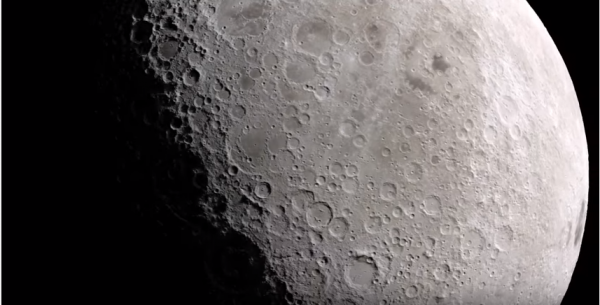By Anish Asokan, | October 14, 2016

An image of the surface of the moon.
Future moon missions might be abandoned due to this latest discovery. Scientists have found new craters forming on the surface of the moon more frequently than what is predicted. It seems our moon now faces an increased risk of being hit by space rocks.
Unlike Earth, the moon has no atmosphere so falling space rocks do not burn up. This makes the surface of the moon more vulnerable to cosmic impacts, which in due could churn the very top layer of material on its surface. Earth is also constantly bombarded with meteors and asteroids. However, the thick atmosphere ensures these particles disintegrate or explode at the upper layers of the atmosphere, resulting in negligible damage.
Like Us on Facebook
The moon does have a large number of craters; most of them aged at least a billion years. Although past studies on lunar crater have provided scientists information about how they were formed and the past rate of cratering, it does not provide any insight on many questions like the risk of bombardments to the surface of the moon.
Scientists claim that impact by comets and asteroids are much heavier than what was previously calculated. According to the Guardian, a study of the data from National Aeronautics and Space Administration shows that the moon gets a complete facelift every 81000 years due to it being constantly bombarded by space rocks.
Thousands of minor disturbances are also found on the surface of the moon, which scientists describes as "scars," due to smaller secondary impacts over a period of thousand years.
The study also highlights that on an average 180 new craters are created annually on the moon, due to the crashing of asteroids and comets.
According to Space, Emerson Speyerer, a planetary scientist at the Arizona State University, Tempe claims that to evaluate more before-and-after images of the lunar surface, a two-year extended mission was approved by NASA for the Lunar Reconnaissance Orbiter spacecraft.
Based on "Before and after" pictures of the moon taken by NASA's Lunar Reconnaissance Orbiter spacecraft from 2009. The scientists led by Emerson Speyerer have published all the findings in the online October 12 edition of Nature.
-
Use of Coronavirus Pandemic Drones Raises Privacy Concerns: Drones Spread Fear, Local Officials Say

-
Coronavirus Hampers The Delivery Of Lockheed Martin F-35 Stealth Fighters For 2020

-
Instagram Speeds Up Plans to Add Account Memorialization Feature Due to COVID-19 Deaths

-
NASA: Perseverance Plans to Bring 'Mars Rock' to Earth in 2031

-
600 Dead And 3,000 In The Hospital as Iranians Believed Drinking High-Concentrations of Alcohol Can Cure The Coronavirus

-
600 Dead And 3,000 In The Hospital as Iranians Believed Drinking High-Concentrations of Alcohol Can Cure The Coronavirus

-
COVID-19: Doctors, Nurses Use Virtual Reality to Learn New Skills in Treating Coronavirus Patients







